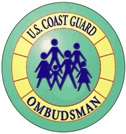 What is the Ombudsman Program?
What is the Ombudsman Program?
The Ombudsman Program is a command-operated program, intended to improve communication between the command and a Coast Guardsman’s family members. Coast Guard Ombudsmen are communication links, information and referral resources, and advocates for command family members.
What are the functions of an Ombudsman?
An Ombudsman communicates regularly with command families, provides information and outreach to command families, provides appropriate referral resources, and acts as an advocate for command families.
How does someone become an Ombudsman?
Appointed by the commanding officer, command ombudsmen are volunteers and spouses of services members within the command. Someone can apply for this position when the command advertises for volunteers. Volunteers are screened, selected, and appointed by the commanding officer (CO) or Officer-in-Charge (OIC).
What training is provided to the Ombudsman?
The ombudsman, with command support, receives Coast Guard Ombudsman Training
(CGOT). CGOT is a standardized course that provides the required knowledge
and develops the skills necessary to perform effectively as the command
ombudsman.
Is financial support available for an Ombudsman?
The command, based on an authorized budget, can provide reimbursement of personal expenses incurred during performance of ombudsman duties. Reimbursable items can include childcare, mileage, communication equipment (such as a computer, cell phone, and pager), Internet service, telephone lines and travel expenses.
Is the Coast Guard the only branch that has an Ombudsman Program?
The Navy has the Navy Family Ombudsman Program from which the Coast Guard’s program is modeled. The Marine Corps has staff Family Readiness Officers who serve as the liaison between the command and the command families. They maintain some roles for spouse volunteers that are similar to the roles of ombudsmen, with a more focused job scope such as administration or social. The Air Force has Key Spouse Program whose volunteers perform a similar role to the Ombudsman Program and the Army has Family Readiness Support Assistants which are similar to the Marine Corps’ FROs.
Who is the Ombudsman’s point of contact at the command?
Ombudsmen work for the CO/OIC at a command. Generally, the CO/OIC appoints the command master chief (CMC) to be the point of contact for the ombudsmen. Most CO/OICs will meet with their ombudsmen periodically, even if the CMC is the point of contact.
Who can be an ombudsman?
Voluntary service as an ombudsman may be accepted from the spouse of a unit
member. The appointed ombudsman normally should not be the spouse or family member of the CO/OIC, XO, or CMC.
Who can use ombudsman services?
The ombudsman is a vital link between the command and Coast Guard families. Coast Guard family is defined as active duty, reservists and their families, including single and married service members, their family members, the service member’s parents, siblings, and others at the discretion of the commanding officer.
How can families locate or contact their ombudsmen at their next duty station before their arrival?
Families can go to
www.cgombudsmanregistry.org and click on the contact your ombudsman tab.
This feature can also be accessed using the USCG HSWL Mobile App by clicking
on the ombudsman tab which links directly to the registry. They can also
contact their local Health, Safety and Work-Life Regional Practice and ask
the Ombudsman Coordinator to give them the name of the ombudsmen they are
seeking.
How can ombudsmen locate or contact other ombudsmen?
Ombudsmen can go to
www.cgombudsmanregistry.org and click on the contact your ombudsman tab.
This feature can also be accessed using the USCG HSWL Mobile App by clicking
on the ombudsman tab which links directly to the registry. They can also
contact their local Health, Safety and Work-Life Regional Practice and ask
the Ombudsman Coordinator to give them the name of the ombudsmen they are
seeking. In addition they can contact their Atlantic and Pacific Area
Regional Ombudsman Coordinator to locate other Ombudsmen.
What is the ombudsman’s role with the command in a crisis or disaster situation?
The ombudsman’s role in crisis and disaster is determined by the commanding
officer and could range from serving as a point of contact for dependent
accountability to assistance in providing vital feedback to the command on
families needs as they arise.
Is there any hierarchy within the Ombudsman Program?
There is no hierarchy within the Coast Guard Ombudsman program. The Commanding Officer/Officer-in-Charge is responsible for the implementation of the Ombudsman Program at his or her command. They will usually appoint a command POC to work directly with the ombudsman on the day to day issues, but will maintain oversight and responsibility. All ombudsmen are to report to their CO/OIC (or designee) – not another ombudsman. A larger command may have more than one ombudsman, but they all have equal status regardless of their experience level or time of service and one is not to be appointed as lead or head over another.